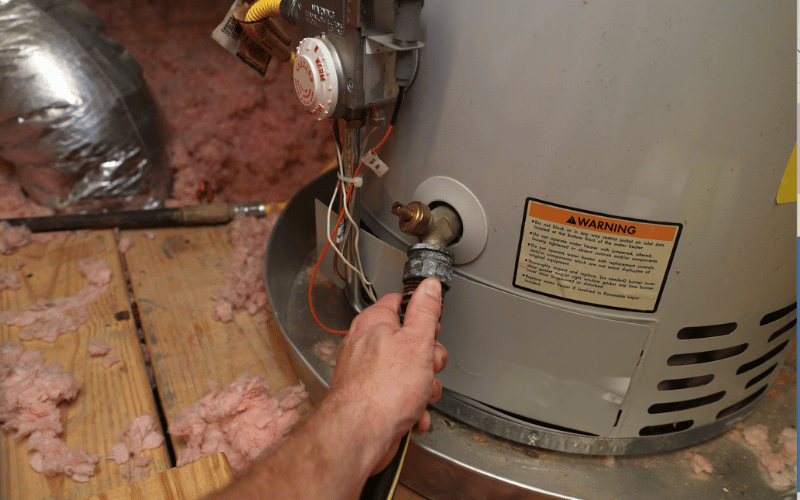Effective Techniques for Caring for Your Home's Hot Water System
Effective Techniques for Caring for Your Home's Hot Water System
Blog Article
What're your thoughts regarding Tips on Maintaining a Water Heater?

Warm water is vital for day-to-day convenience, whether it's for a refreshing shower or washing recipes. To ensure your warm water system runs efficiently and lasts longer, regular maintenance is essential. This write-up provides functional ideas and insights on how to preserve your home's warm water system to stay clear of disruptions and expensive repair services.
Introduction
Maintaining your home's warm water system could seem difficult, yet with a couple of basic actions, you can guarantee it runs smoothly for many years ahead. This overview covers everything from understanding your hot water system to DIY upkeep pointers and knowing when to call in specialist aid.
Value of Maintaining Your Warm Water System
Normal maintenance not only prolongs the life expectancy of your warm water system yet likewise ensures it runs successfully. Overlooking upkeep can lead to decreased performance, higher power bills, and even early failing of the system.
Signs Your Warm Water System Demands Maintenance
Knowing when your warm water system needs focus can prevent significant issues. Watch out for indicators such as inconsistent water temperature, odd sounds from the heating system, or rustic water.
Purging the Hot Water Heater
Flushing your hot water heater removes debris build-up, improving effectiveness and prolonging its life.
Checking and Replacing Anode Rods
Anode poles prevent deterioration inside the storage tank. Evaluating and replacing them when worn is crucial.
Complex Problems Calling For Specialist Help
Examples include major leaks, electrical problems, or if your water heater is consistently underperforming.
Regular Specialist Upkeep Benefits
Professional maintenance can include comprehensive evaluations, tune-ups, and ensuring compliance with safety and security criteria.
Evaluating and Changing Temperature Settings
Adjusting the temperature settings ensures optimal efficiency and security.
Do It Yourself Tips for Upkeep
You can perform several maintenance tasks yourself to keep your hot water system in leading problem.
Looking for Leakages
Consistently check pipelines and links for leakages, as these can cause water damages and greater costs.
Recognizing Your Hot Water System
Before diving into maintenance tasks, it's valuable to understand the basic components of your hot water system. Generally, this includes the water heater itself, pipes, anode rods, and temperature level controls.
Month-to-month Upkeep Tasks
Routine regular monthly checks can help capture small concerns prior to they escalate.
Evaluating Stress Alleviation Valves
Checking the pressure relief valve ensures it operates appropriately and prevents excessive pressure buildup.
Insulating Pipelines
Insulating warm water pipelines minimizes warm loss and can save power.
When to Call an Expert
While DIY upkeep is useful, some issues require specialist experience.
Final thought
Regular maintenance of your home's warm water system is crucial for performance, durability, and cost financial savings. By adhering to these ideas and knowing when to look for professional aid, you can guarantee a reputable supply of hot water without unanticipated interruptions.
How to Maintain an Instant Hot Water Heater
Before tinkering with your hot water heater, make sure that it’s not powered on. You also have to turn off the main circuit breaker and shut off the main gas line to prevent accidents. Also turn off the water valves connected to your unit to prevent water from flowing into and out of the appliance. 2. When you’re done, you have to detach the purge valves’ caps. These look like the letter “T†and are situated on either side of the water valves. Doing so will release any pressure that has accumulated inside the valves while at the same time avoid hot water from shooting out and burning your skin. 3. When the purge valves’ caps are removed, you have to connect your hosing lines to the valves. Your unit should have come with three hoses but if it didn’t, you can purchase these things from any hardware or home repair shops. You can also get them from retail stores that sell water heating systems. Read the user’s manual and follow it to complete this task properly. When the hosing lines are connected, open the purge port’s valves. 4. You should never use harsh chemical cleaners or solutions when cleaning your unit. Make use of white vinegar instead. It should be undiluted and you’ll probably use about 2 gallons. 5. Now flush your water heater. This task should probably take about 40 minutes. We can’t give you specific directions for this because the procedure is carried out depending on the type, model and brand of your heater. With that being said, refer to the user’s manual. 6. When you’re done draining the unit, you have to turn off the purge port valves again. Remove the hosing lines that you earlier installed on each of the water valves. Put the valve caps (purge port) back in their respective places and be very careful so as not to damage the rubber discs that are found inside these caps. 7. Now that everything’s back in place, check your user’s manual again to find out how to reactivate your water heating system. 8. Once it is working, turn one of your hot water faucets on just to let air pass through the heater’s water supply pipes. Leave the tap on until water flows smoothly out of it. https://www.orrplumbing.com/blog/2014/september/how-to-maintain-an-instant-hot-water-heater/

I stumbled upon that write up about Water Heater Maintenance Tips You Can't Afford to Forget while doing a search on the internet. Be sure to take the time to distribute this entry if you enjoyed it. Many thanks for taking the time to read it.
Book Appointment Report this page